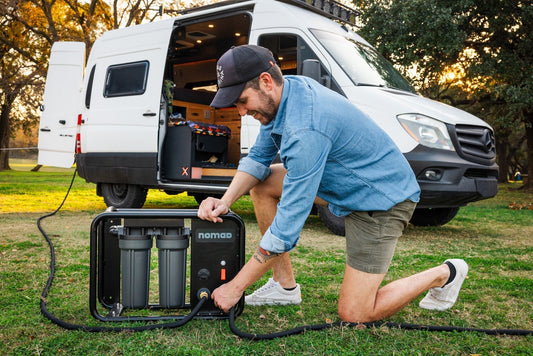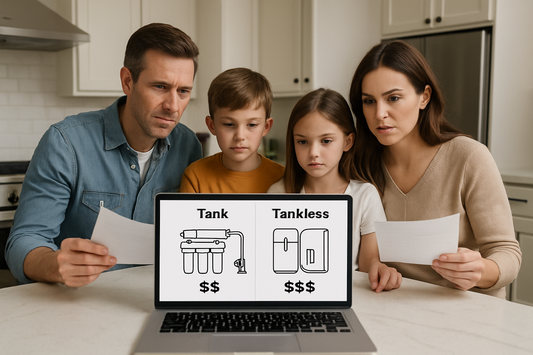When Sarah turned on her kitchen tap last Tuesday morning, the water tasted like a swimming pool. That chlorine-heavy flavor was her wake-up call—literally. Like millions of Americans dealing with municipal water treatment chemicals, pesticide runoff, and industrial contaminants, she needed a solution that actually worked. Enter the carbon block water filter, a technology that's revolutionizing how families protect their drinking water.
But here's what most people don't know: not all carbon filters are created equal. The difference between a basic granular carbon filter and a high-quality coconut shell carbon filter can mean the difference between mediocre results and genuinely pure, great-tasting water.
What Is a Carbon Block Water Filter?
A carbon block water filter is essentially compressed activated carbon formed into a solid block. Think of it as thousands of tiny carbon particles pressed together, creating a dense matrix that water must navigate through. Unlike loose granular carbon that water can easily bypass, carbon blocks force every drop through multiple layers of filtration media.
The magic happens at the molecular level. Each carbon particle contains millions of microscopic pores—so many that a single gram of activated carbon has a surface area equivalent to 10 football fields. When water passes through, contaminants get trapped in these pores through a process called adsorption (not absorption—there's a crucial difference).
Why Coconut Shell Carbon Dominates Water Filtration
Here's where the story gets interesting. Not all activated carbon performs equally, and the source material makes all the difference.
The Coconut Shell Advantage
Coconut shell activated carbon water filter technology has become the gold standard for three compelling reasons:
Superior Pore Structure: Coconut shells create what scientists call "micropores"—tiny spaces perfectly sized to trap organic compounds, chlorine, and volatile organic compounds (VOCs). Coal-based carbon, by contrast, has larger pores that let smaller contaminants slip through.
Renewable and Sustainable: While coal mining devastates environments, coconut shells are agricultural waste products. Every coconut shell carbon filter represents a waste product transformed into a water purification powerhouse.
Harder and More Durable: Coconut shell carbon maintains its structure longer than wood or coal alternatives, meaning your filter performs consistently throughout its lifespan.
The Science Behind Superior Performance
When water encounters a carbon block water filter made from coconut shells, several processes happen simultaneously:
Mechanical Filtration: The compressed block structure physically traps particles larger than the pore spaces.
Chemical Adsorption: Contaminants with molecular structures similar to carbon get attracted and stick to the carbon surface.
Catalytic Reduction: Chlorine molecules get broken down into harmless chloride ions through chemical reactions with the carbon surface.

Carbon Block vs. Granular Carbon: The Performance Gap
Most people assume all carbon filters work the same way. This misconception costs families money and compromises their water quality.
Granular Carbon Limitations
Granular activated carbon (GAC) systems contain loose carbon particles in a container. Water flows around and through these particles, but here's the problem: water always takes the path of least resistance. Much of your water bypasses the carbon entirely, creating what filtration experts call "channeling."
Carbon Block Superiority
What is a carbon block water filter's secret weapon? Uniform contact. Every water molecule must navigate through the compressed carbon matrix. There's no bypassing, no shortcuts—just thorough, consistent filtration.
Performance data tells the story:
- Chlorine reduction: Carbon blocks achieve 95%+ removal vs. 70-80% for granular
- Organic compound removal: 85%+ vs. 60-70% for granular
- Filter lifespan: 6-12 months vs. 3-6 months for granular
Crystal Quest Carbon Block Technology: Engineering Excellence
When evaluating coconut shell carbon filter options, Crystal Quest represents the pinnacle of engineering sophistication. Their carbon block cartridges don't just meet industry standards—they exceed them.
Advanced Manufacturing Process
Crystal Quest carbon blocks undergo a proprietary compression process that creates optimal pore distribution. Too loose, and water bypasses the carbon. Too tight, and flow rates suffer. Their engineers have perfected the balance.
Multi-Stage Filtration Approach
Each Crystal Quest cartridge combines coconut shell carbon with additional filtration media:
- Pre-filtration layer: Removes sediment and larger particles
- Carbon block core: Handles chlorine, organics, and taste/odor issues
- Post-filtration layer: Polishes water for final purity

Image by Andrei Naumenka
Real-World Applications: Where Carbon Block Filters Excel
Understanding what is a carbon block water filter capable of helps you make informed decisions about your family's water quality.
Municipal Water Treatment
City water contains necessary disinfection chemicals, but these same chemicals create taste and odor problems. Carbon block filters excel at removing:
- Chlorine and chloramines
- Trihalomethanes (THMs)
- Pesticide residues
- Industrial solvents
- Pharmaceutical traces
Well Water Applications
Private well owners face different challenges—organic compounds from agricultural runoff, naturally occurring organics, and intermittent contamination events. Coconut shell activated carbon water filter technology handles these variables effectively.
Commercial and Industrial Use
Restaurants, offices, and manufacturing facilities rely on carbon block technology for consistent water quality. The predictable performance and longer lifespan make them ideal for high-volume applications.
Installation and Maintenance: Maximizing Your Investment
The best carbon block water filter delivers nothing if improperly maintained. Here's how to ensure optimal performance:
Installation Best Practices
Location Matters: Install carbon blocks after sediment pre-filtration but before any UV or reverse osmosis stages.
Flow Rate Considerations: Carbon blocks require slower flow rates for optimal contact time. Size your system accordingly.
Pressure Requirements: Ensure adequate water pressure (minimum 30 PSI) for proper function.
Maintenance Schedule
Replace carbon block cartridges every 6-12 months or after filtering 1,000-2,000 gallons, whichever comes first. Signs of saturation include:
- Chlorine taste returning
- Reduced flow rates
- Off-putting odors
Making the Right Choice: Buying Considerations
When selecting a coconut shell carbon filter, consider these factors:
Certification Standards
Look for NSF/ANSI Standard 42 (aesthetic effects) and Standard 53 (health effects) certifications. These third-party validations ensure performance claims are legitimate.
Capacity and Flow Rate
Match filter capacity to your household's water usage. A family of four typically needs 1,500-2,000 gallon capacity cartridges.
Housing Compatibility
Ensure your chosen carbon block fits your existing system housing or plan for complete system replacement.
The Future of Water Filtration
Carbon block water filter technology continues evolving. Emerging innovations include:
- Catalytic carbon for enhanced chloramine removal
- Silver-impregnated carbon for antimicrobial properties
- Specialized carbon blends for specific contaminants
Conclusion: Your Water, Your Choice
The question isn't whether you need water filtration—it's whether you'll choose technology that actually works. Coconut shell activated carbon water filter systems represent decades of engineering refinement, delivering consistent results that protect your family's health while improving taste and odor.
Every glass of water should taste clean, smell fresh, and provide peace of mind. With carbon block technology, that's not just possible—it's guaranteed.
FAQs
How often should I replace my carbon block filter? Replace every 6-12 months or after filtering 1,000-2,000 gallons, depending on water quality and usage patterns.
Can carbon block filters remove fluoride? Standard carbon blocks don't remove fluoride effectively. Specialized activated alumina or reverse osmosis systems are better options for fluoride removal.
What's the difference between carbon block and reverse osmosis? Carbon blocks excel at removing chlorine, organics, and taste/odor issues. Reverse osmosis removes dissolved minerals and smaller contaminants but requires carbon pre-filtration.
Do carbon block filters remove beneficial minerals? No, carbon blocks primarily target organic compounds and chlorine while leaving beneficial minerals like calcium and magnesium intact.
Why does my water flow seem slower with carbon blocks? Carbon blocks create more resistance than granular carbon, requiring adequate water pressure (30+ PSI) for optimal flow rates.





